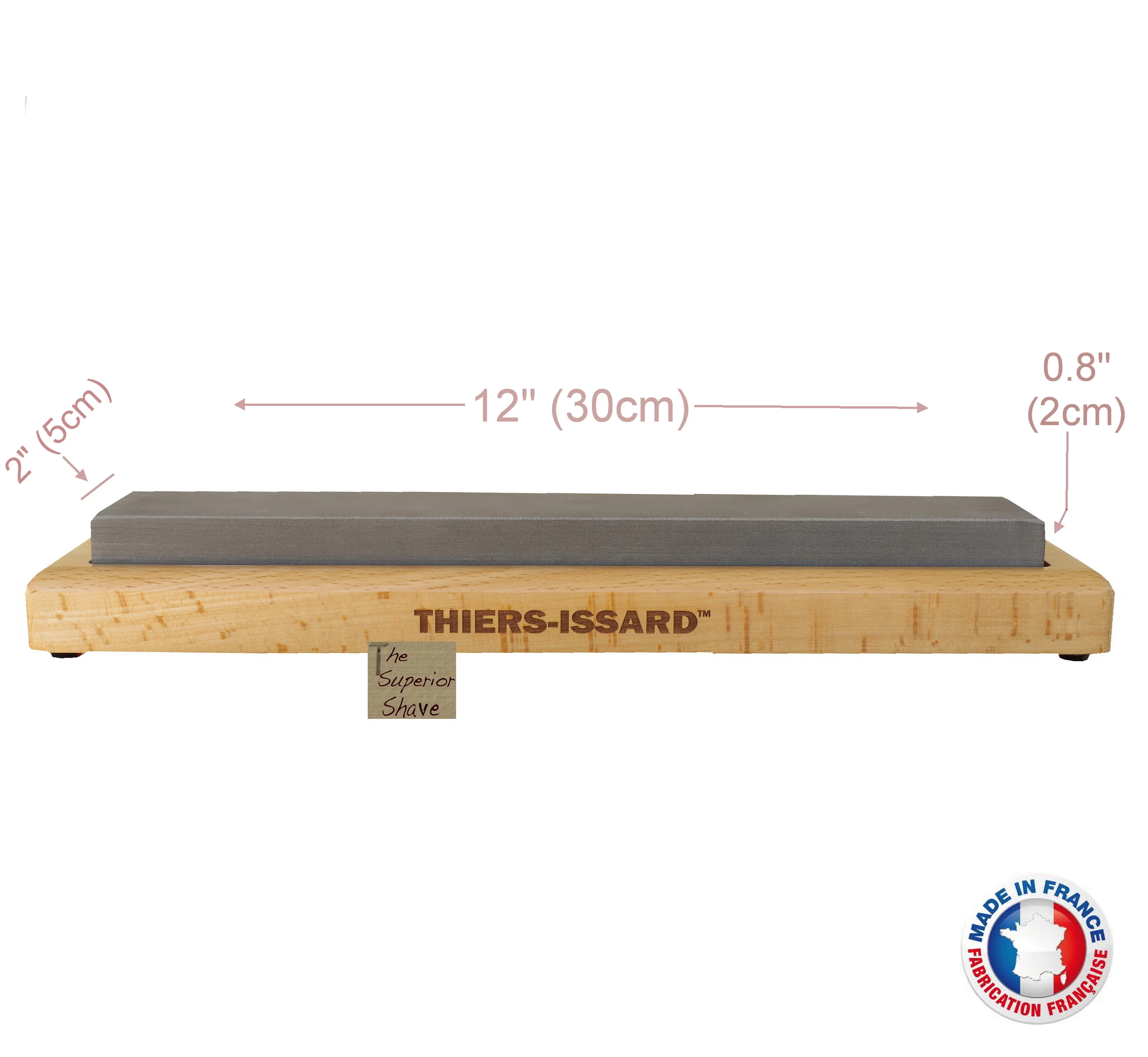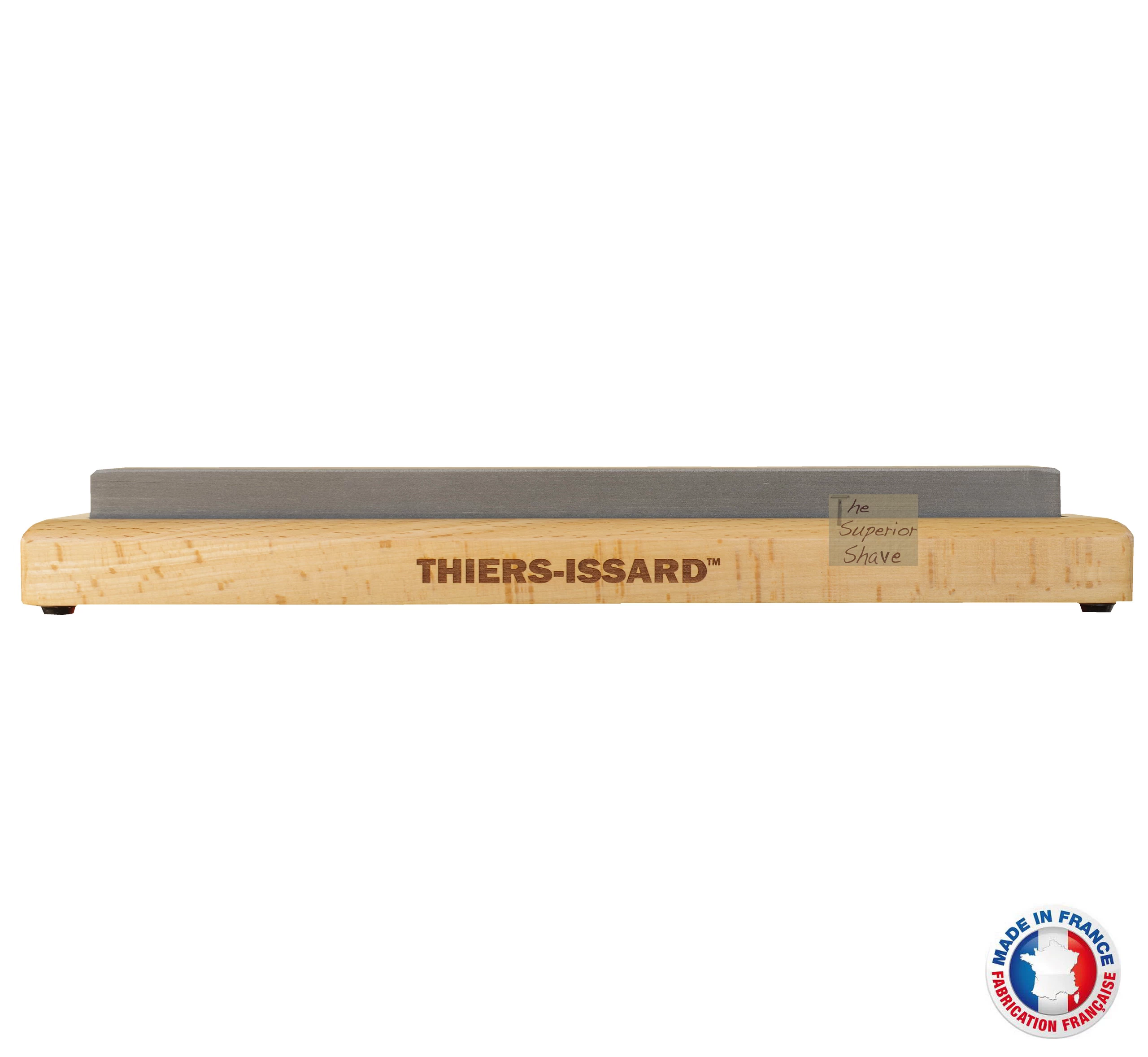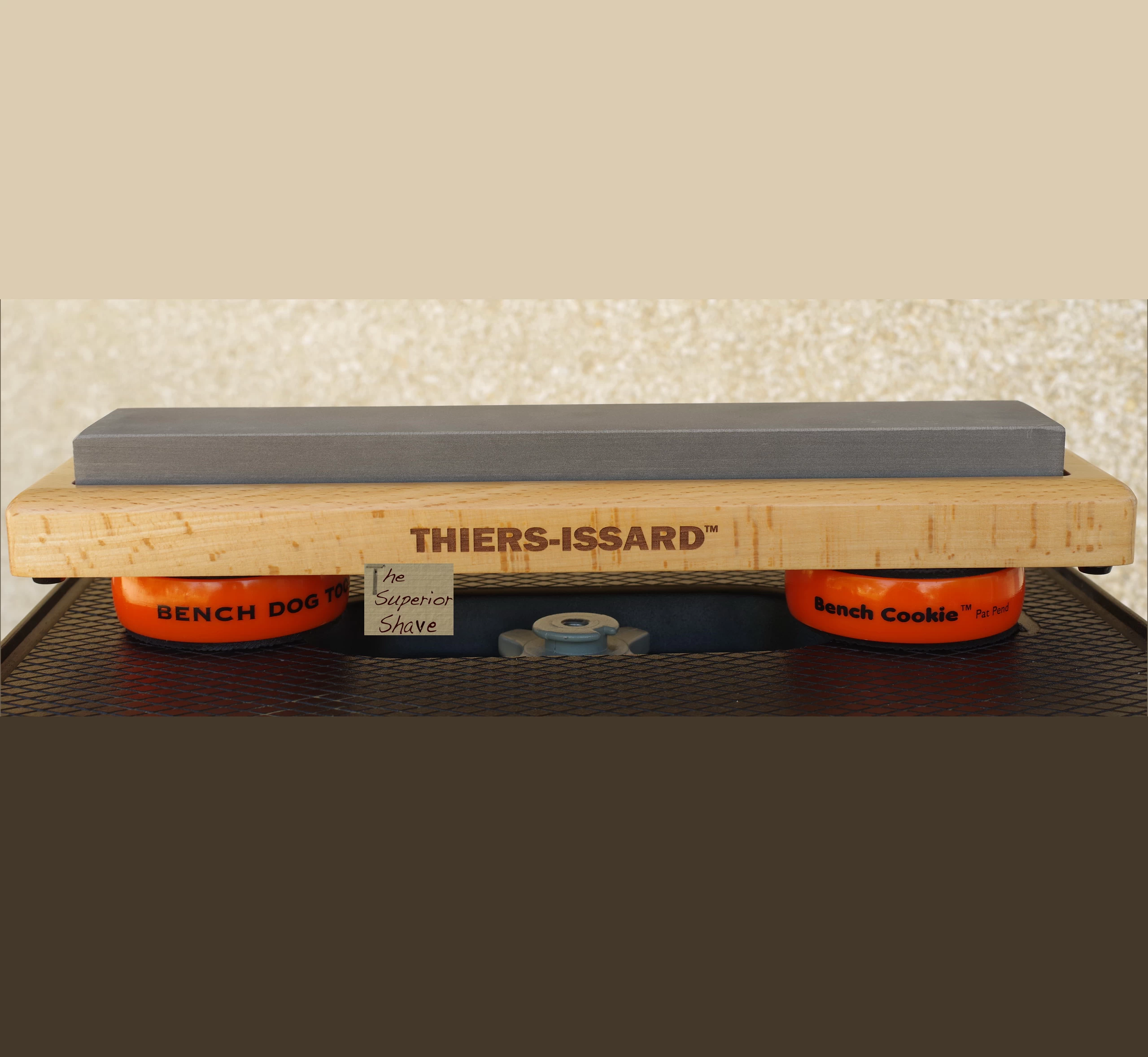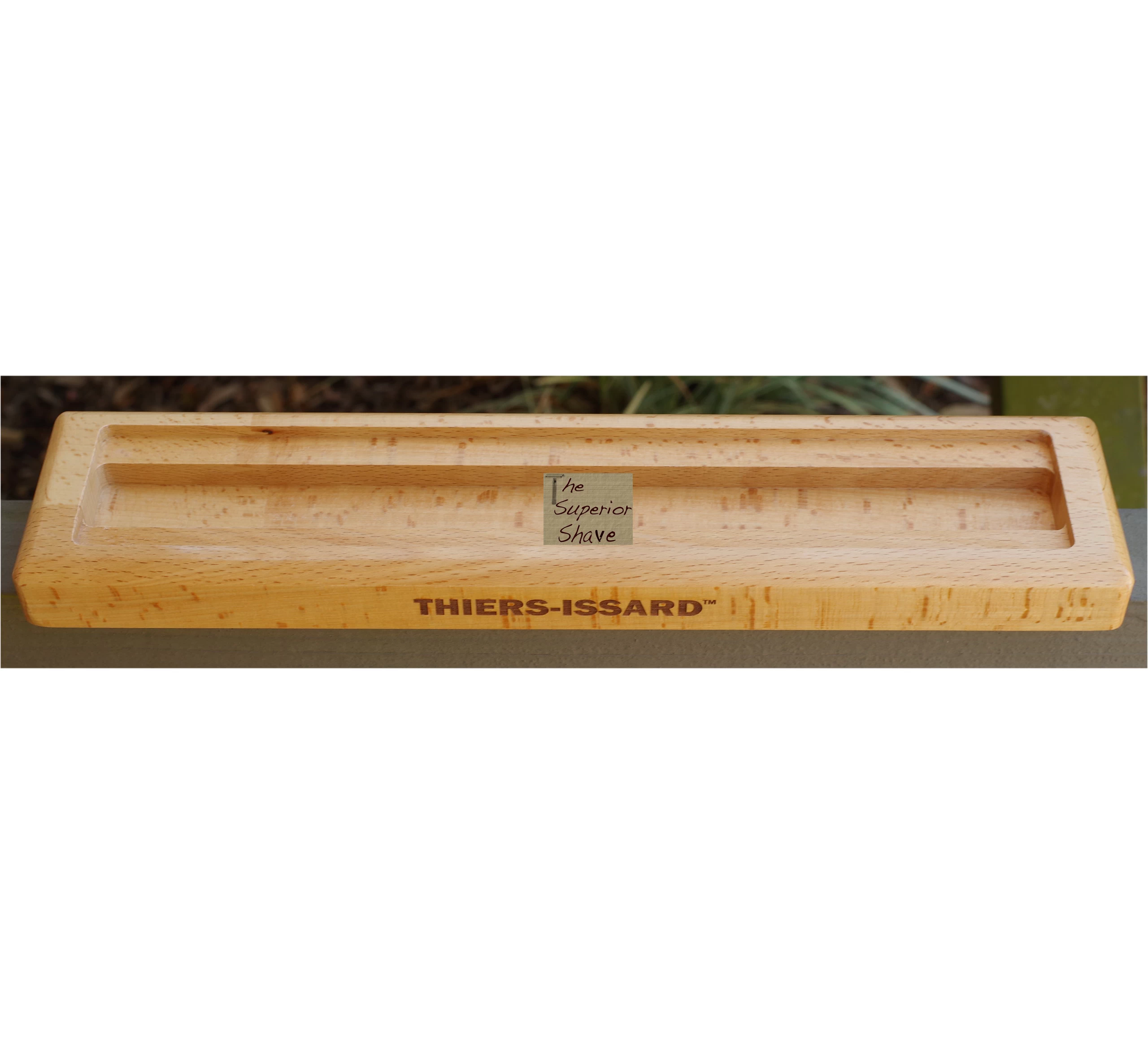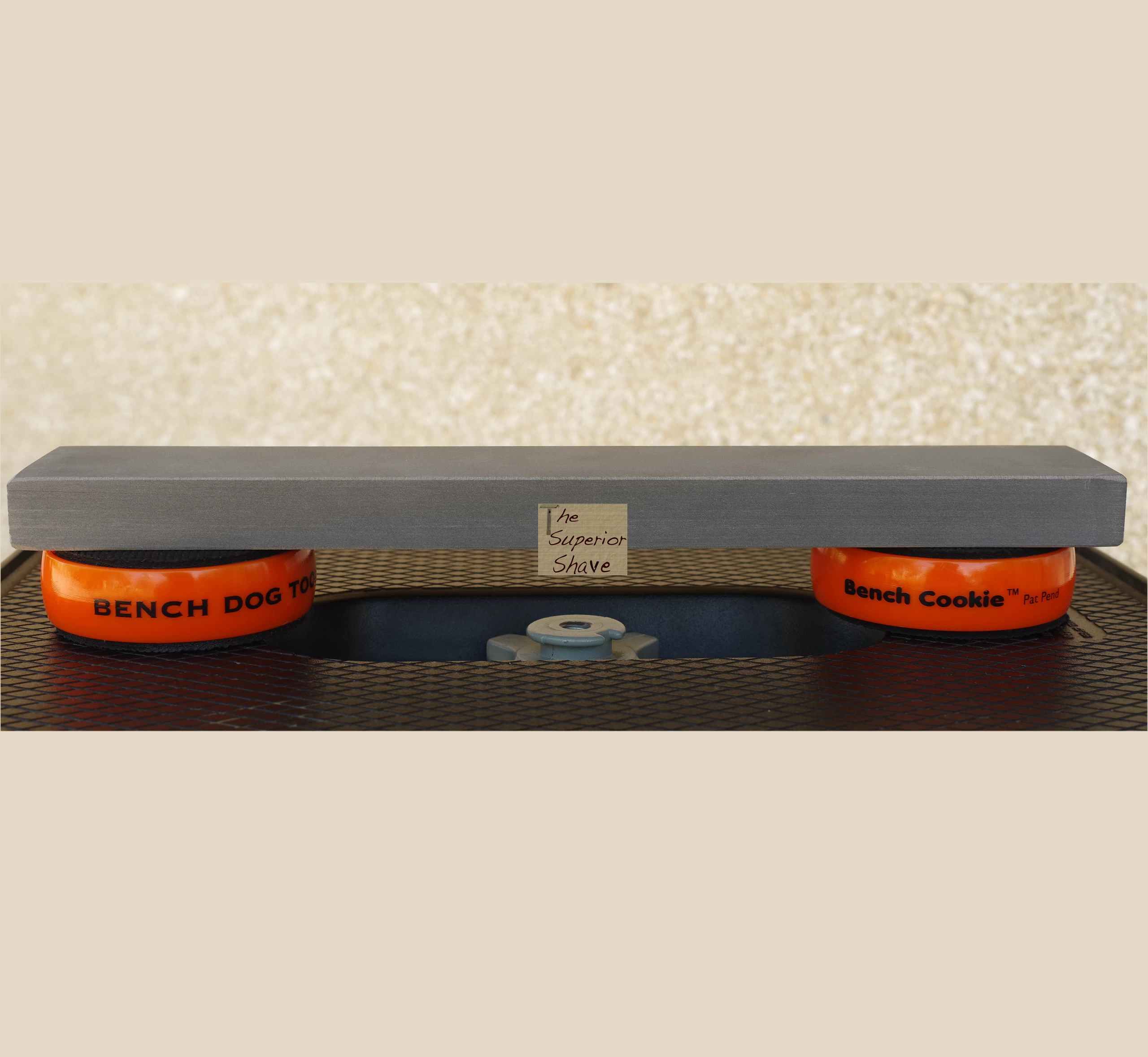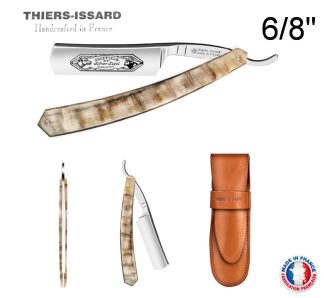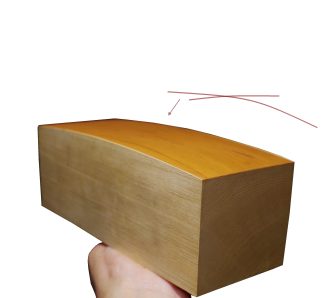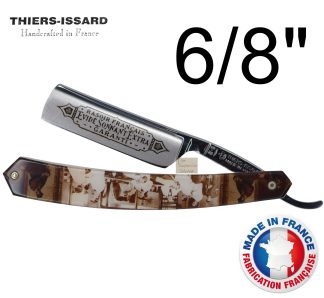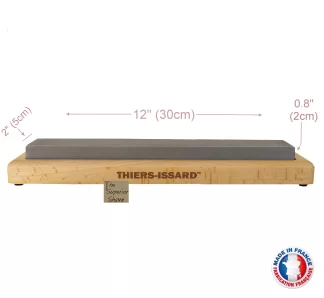Description
A copy of this large sharpening stone which shown to me eleven years ago by Thiers-Issard’s former managing director, the first to explain to me of the concept of the wheel-shaped stones.
According to that suave fellow, following the hollow grind procedure, TI sets up their cutting edge on a pair of wheels seen here (which have a significantly shorter effective diameter than that which follows), and then they move on to this natural Pyrenees stone for a bit, which (- again, ~12yrs-old info, but highly unlikely to change) they shape by hand to be slightly convex (and too subtle for you to see in that video, but I assure you a ruler placed on the stone in-person would see it), and finishing via a strop regimen as here.
The idea is by thinning the bevel’s “rear” form and only leaving a small piece “in front of” the concaved portion, the work with the bench stone (either flat or convex with a very long diameter) only has a tiny patch of metal upon which it can work, for all the metal “behind” it (= closer to the spine) has been removed. At that point, refining the razor’s edge with the slightly concaved surface of a pasted strop ensures they are polishing at the very apex of the bevel form, putting a ‘micro-convex’ apex upon an otherwise concave bevel. That’s the French way, and it has been that way for a long time.
I don’t know their particular numbers of effective diameters they use to impart their preference toward the razors’ bevel forms. But as this is a coarser natural stone appropriate for bevel-setting a straight razor or finishing a kitchen knife, in my professional opinion for the use with straight razors it would benefit from a reduction of thickness of at ~2mm over the stone’s ~12″ length, which is not an easy task shaping by hand as they do.
You can use our dedicated plate, as I myself did, but as this stone exceeds the length of most sandpaper and our plate’s 11″ span by nearly an inch, you must work in phases, and in the end you can certainly get an effective and consistent curve, but not one as short a diameter as the plate.
Personally, I would shape one side convex however you do, and use a granite surface plate or a sheet of float glass backed by sandpaper to truly flatten the other side. Such a finished tool will be a formidable option in both the kitchen and for the razor!
FWIW, I was told 12yrs ago by their old director that they used this stone with new, clean low weight motor oil. He did/does have a thick French accent, so perhaps something lost in translation, but that’s what the man said.

